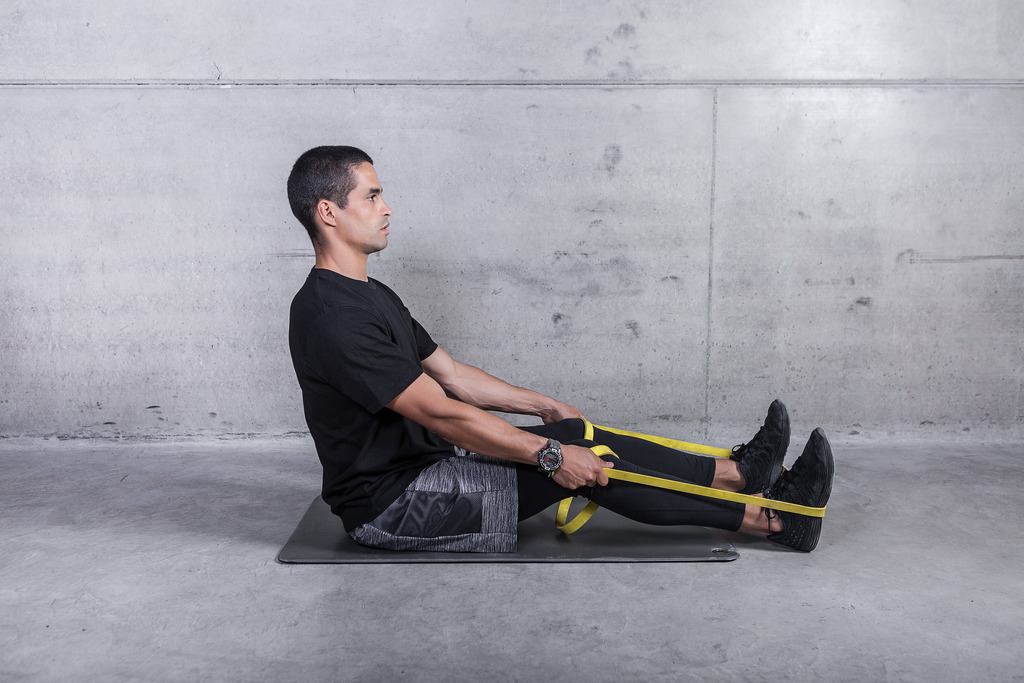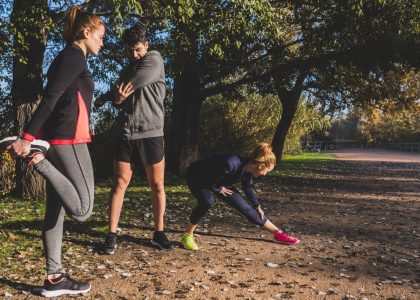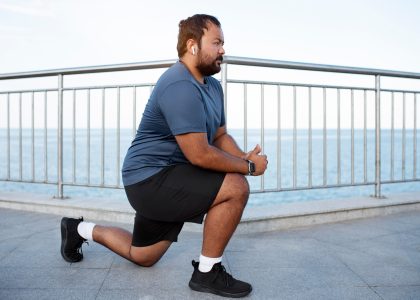If you’re looking to strengthen your lower body without the need for bulky equipment or expensive gym memberships, we’ve got you covered.
Resistance bands are a versatile and convenient tool for targeting multiple muscle groups simultaneously, making them perfect for compound exercises.
This article will explore a range of compound resistance band exercises designed to challenge your legs in new ways, helping you achieve greater strength, stability, and flexibility.
Are you ready to take your leg workout to the next level?
If so, let’s get going:
Best Leg Exercises With Resistance Bands
Here is a list of compound resistance band workouts for legs:
1. Squats with Resistance Bands
Squats with resistance bands are an excellent way to strengthen your entire leg muscles, including the quadriceps, hamstrings, and glutes.
The added resistance from the band challenges your muscles throughout the entire squat motion, helping to improve overall lower body strength, stability, and endurance.
Incorporating this resistance band leg workout into your routine can contribute to better functional movement and support activities in daily life.
Step-By-Step Guide:
- Place the resistance band just above your knees.
- Stand with feet shoulder-width apart and toes turned slightly out.
- Inhale and engage your core.
- Initiate the squat by pushing your hips back and bending your knees.
- Keep your chest up and maintain a neutral spine.
- Descend until your thighs are parallel to the ground or as far as comfortable.
- Exhale and push through your heels to return to the starting position.
- Squeeze your glutes at the top.
2. Resistance Band Fire Hydrant
Performing fire hydrants with a resistance band primarily targets the muscles of the outer hips and glutes.
This exercise helps enhance hip stability and strengthens the muscles responsible for hip abduction.
By incorporating the band, you increase the challenge on these muscles, promoting better hip function, which can be particularly beneficial for activities that involve lateral movement and balance.
Step-By-Step Guide:
- Place the band above your knees, get on all fours (hands and knees).
- Lift one knee out to the side, maintaining a 90-degree angle at the hip and knee.
- Focus on using your glutes to lift the leg.
- Hold the contraction at the top for a brief moment.
- Lower the knee back down with control.
3. Resistance Band Clamshell
The clamshell exercise with a resistance band is a targeted movement for the muscles on the side of your hips.
It is one of the best compound resistance band exercises for legs that also engage the gluteus medius, promoting hip stability and preventing inward knee collapse.
Strengthening these muscles is crucial for maintaining proper lower body alignment, reducing the risk of injuries, and enhancing overall lower body strength.
Step-By-Step Guide:
- Lie on your side with the band just above your knees, knees bent at 90 degrees.
- Keeping your feet together, open your knees against the resistance of the band.
- Squeeze your glutes at the top of the movement.
- Lower your knees back down with control.
- Maintain a straight line from your head to your hips, and don’t let your hips roll backward.
4. Lateral Band Walk
Lateral band walks are effective for activating the muscles on the sides of your hips and thighs.
This exercise improves hip mobility and strengthens the hip abductors, which are essential for maintaining proper knee alignment during various movements.
Incorporating lateral band walks into your routine can contribute to better lateral stability and balance.
Step-By-Step Guide:
- Place the band just above your knees.
- Starting Position: Stand with feet hip-width apart.
- Take a step to the side with one foot, maintaining tension on the band.
- Follow with the other foot, maintaining a slight bend in the knees.
- Keep the band stretched throughout the movement.
- Maintain a straight posture and avoid excessive leaning. Focus on engaging the outer hip muscles.
5. Standing Leg Abduction
Standing leg abductions with a resistance band target the outer thighs and hips, particularly the gluteus medius.
This exercise helps to improve hip strength and stability, enhancing your ability to move laterally with control.
Including standing leg abductions in your resistance band leg workout routine can be beneficial for addressing muscle imbalances and supporting overall lower body function.
Step-By-Step Guide:
- Place the band just above your ankles.
- Stand with feet hip-width apart.
- Lift one leg to the side against the resistance of the band.
- Keep the leg straight or with a slight bend in the knee.
- Squeeze the side of your glutes at the top.
- Lower the leg back down with control.
- Focus on the abduction movement, and keep your core engaged for stability.
6. Glute Bridges with Band
Glute bridges with a resistance band provide an effective way to activate and strengthen the glutes.
The band adds resistance, intensifying the engagement of the glute muscles during the bridge movement.
This exercise helps improve hip extension and can contribute to better posture, reduced lower back discomfort, and enhanced overall gluteal strength.
Step-By-Step Guide:
- Place the band just above your knees and lie on your back with knees bent.
- Press through your heels to lift your hips toward the ceiling.
- Squeeze your glutes at the top and ensure the band provides resistance.
- Lower your hips back down with control.
- Maintain a straight line from your shoulders to your knees at the top of the bridge.
7. Banded Standing Kickbacks
Banded standing kickbacks are a targeted exercise for isolating the glutes and hamstrings. The resistance band adds extra tension, making the muscles work harder throughout the kickback motion.
This exercise is beneficial for toning and strengthening the posterior chain, promoting improved muscle balance and stability in the lower body.
Incorporating banded standing kickbacks into your leg workout routine can contribute to a more comprehensive leg and glute training program.
Step-By-Step Guide:
- Place the band just above your ankles.
- Stand with feet hip-width apart.
- Kick one leg straight back, engaging your glutes.
- Keep a slight bend in the supporting leg.
- Squeeze your glutes at the top of the movement.
- Lower the leg back down with control.
- Focus on the glute contraction, and avoid arching your lower back.
Over To You
Incorporating compound resistance band exercises into your leg workout routine can revolutionize the way you train.
They offer a convenient and cost-effective alternative to traditional weightlifting and provide unique benefits such as improved stability, balance, and range of motion.
Which compound resistance band leg exercise are you most excited to try?
How do you plan to integrate them into your leg workout routine?
Share your thoughts and experiences in the comments below.




